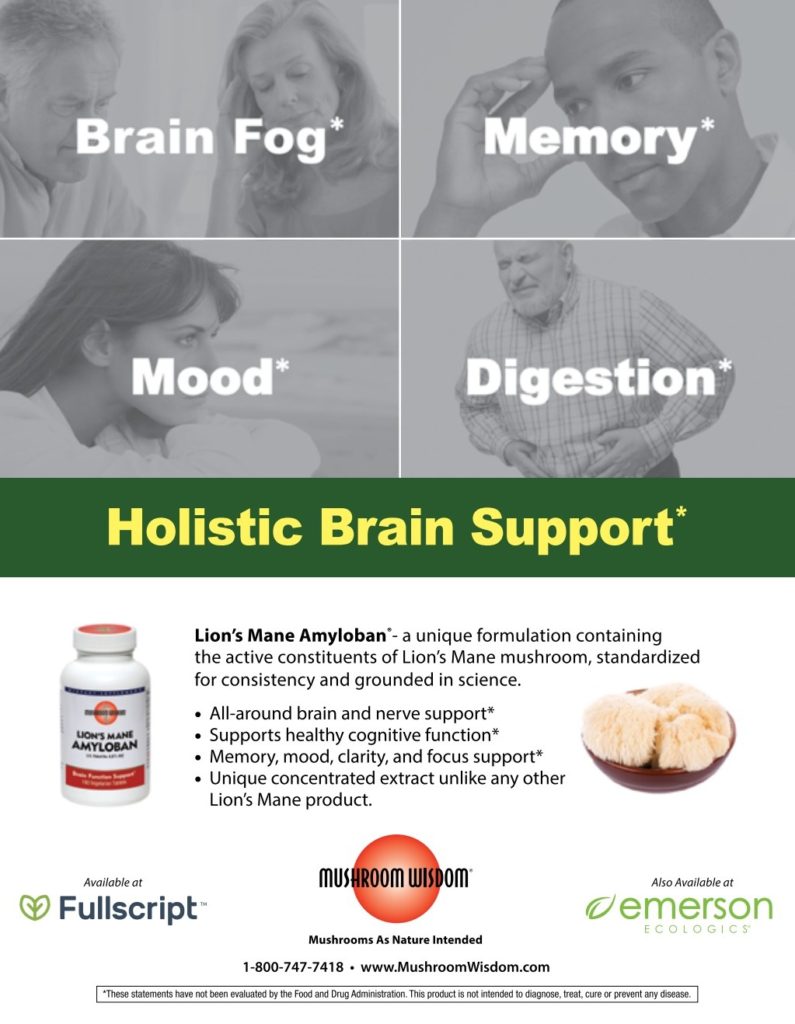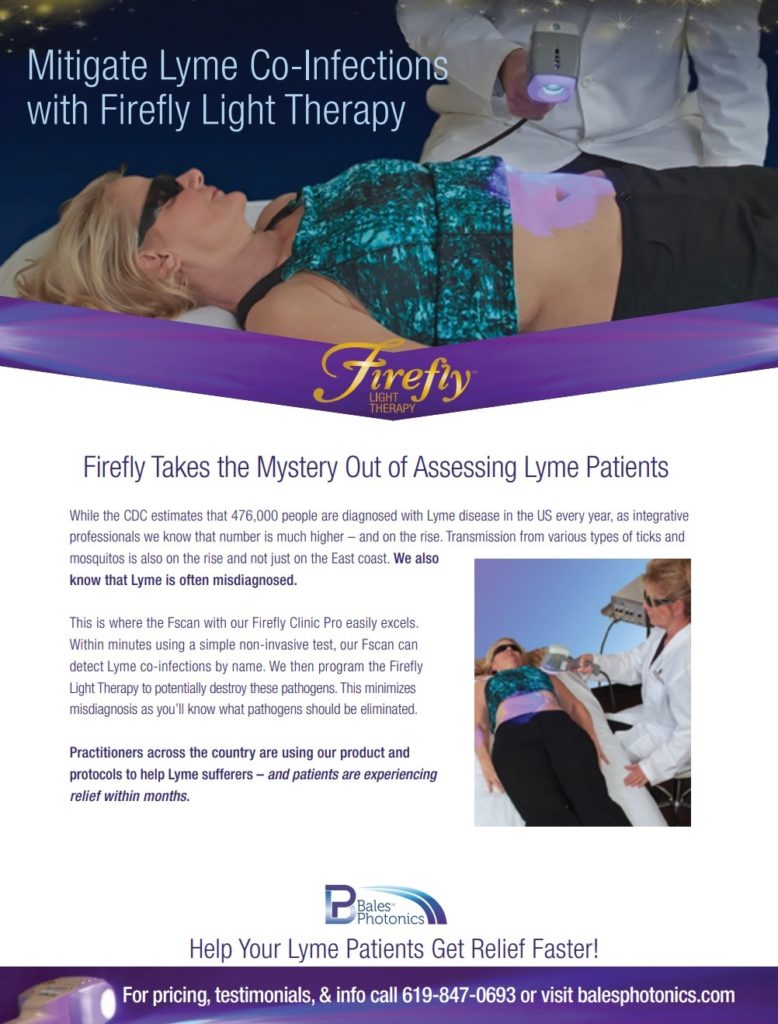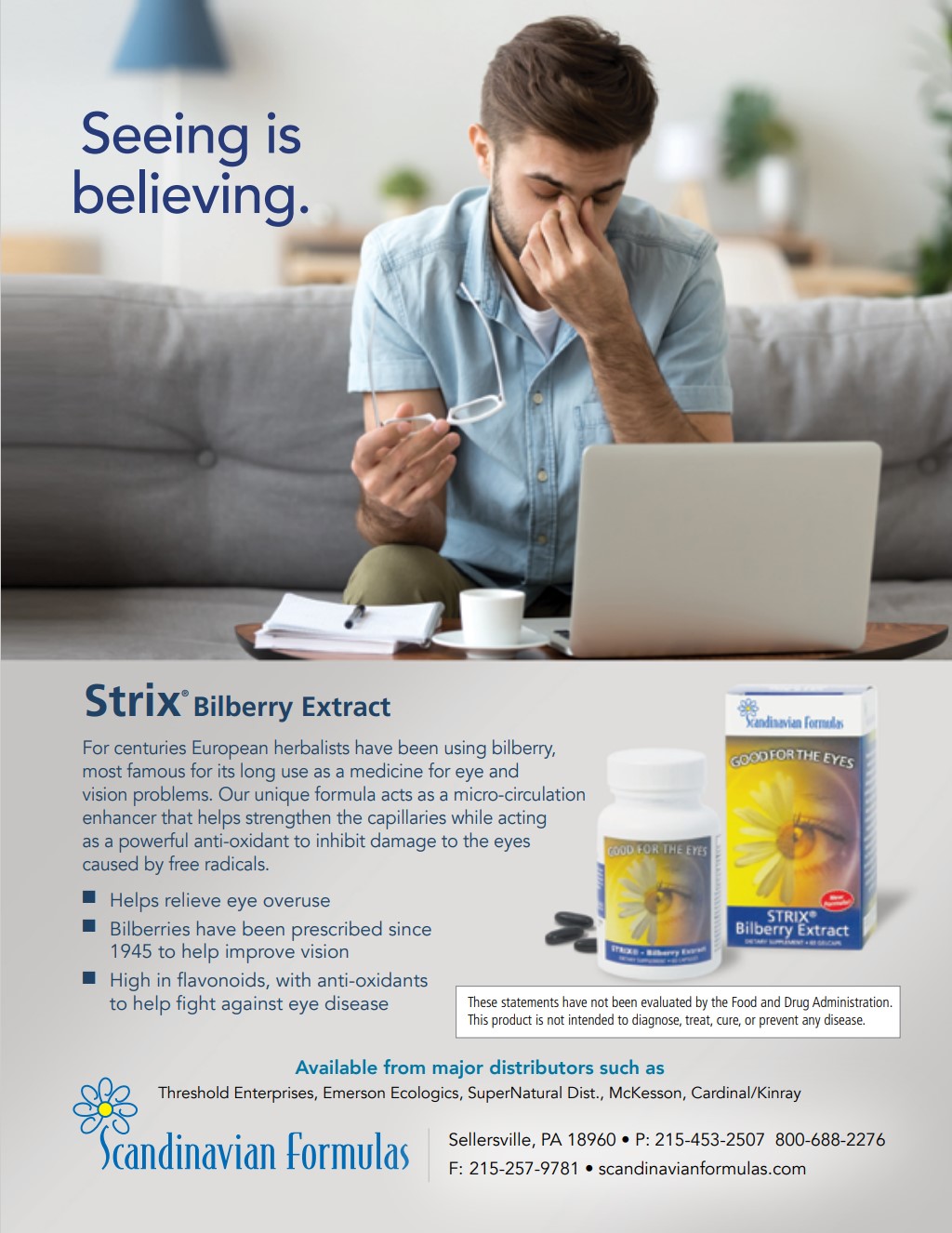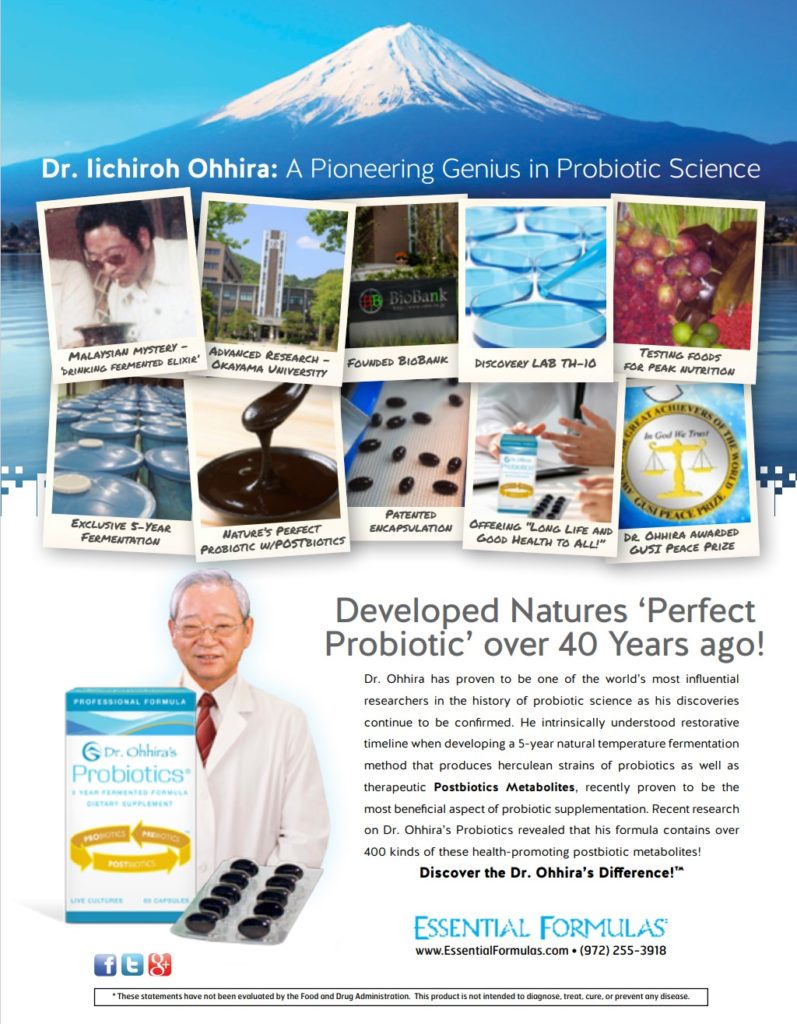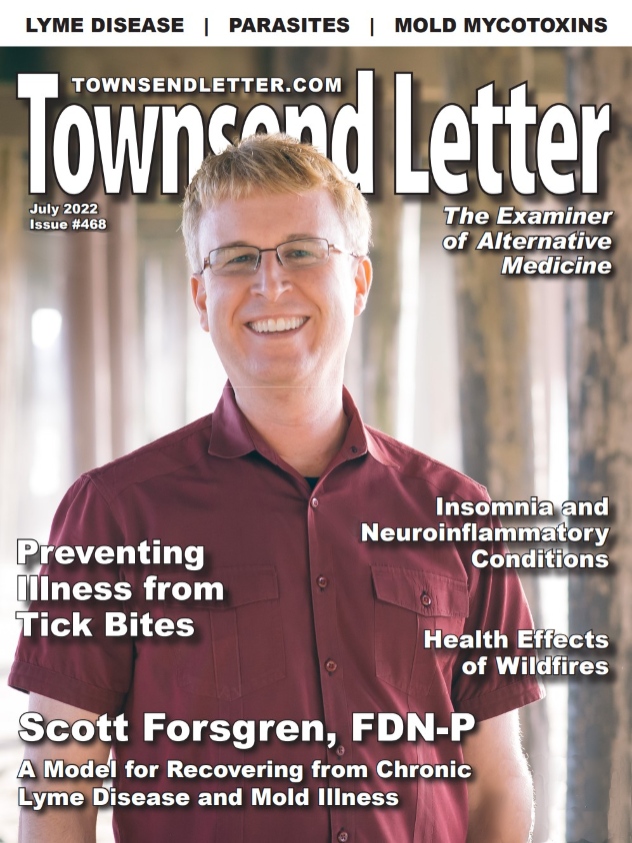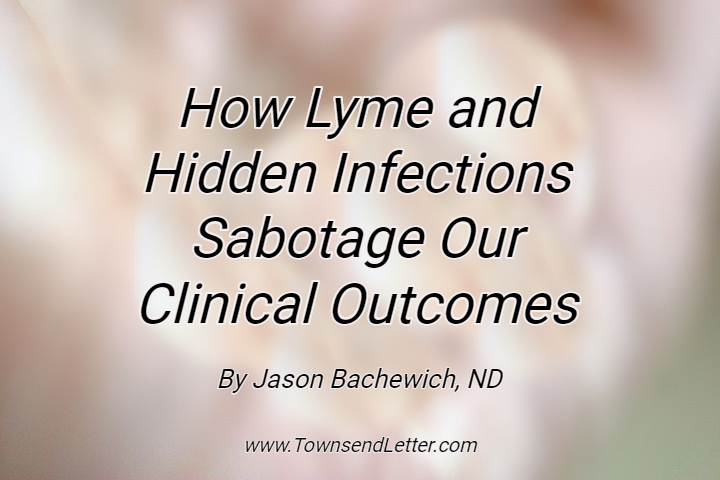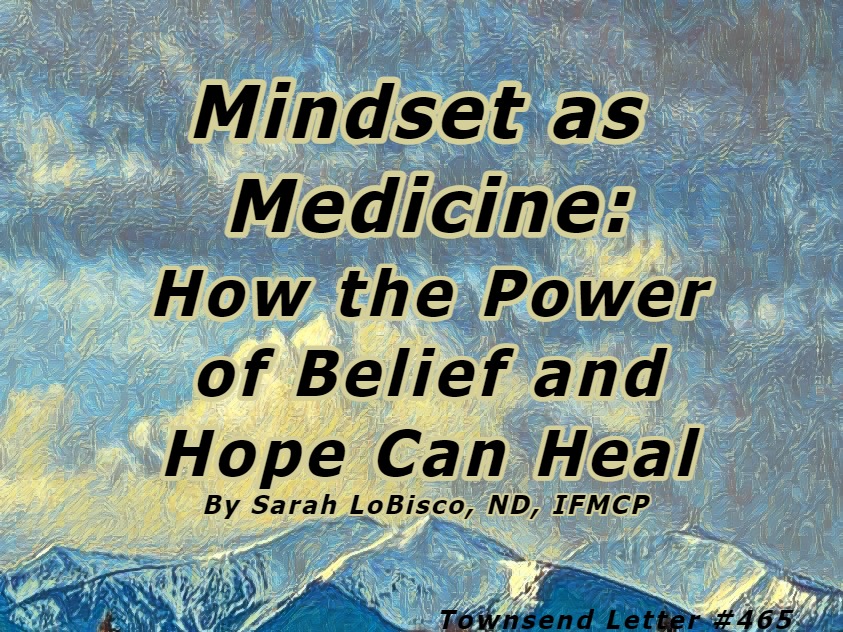By John Parks Trowbridge, MD, FACAM
In Part 1 (Townsend Letter, June 2022), Dr. Trowbridge explains the history of The Yeast Syndrome, describes its symptoms and underlying causes, and outlines the primary treatment components.
When Christopher Columbus set forth across the Atlantic from Spain in 1492, he was seeking a direct route to the East Indies, hoping to capitalize on the lucrative spice trade. As with the best laid plans in many fields, his understanding of the terrain was slightly “off.” Still, he made history as the first European contact with the Caribbean, Central America, and South America. His “Indians” were…well, you know the rest. Interestingly, the name was assigned also to the American natives inhabiting North America proper.
So how does this history relate to The Yeast Syndrome? Since the time of Dr. Truss’ initial observations, ad hominem attacks and unsupported criticism from various professional groups have discouraged practitioners from investing the time and effort required to understand and embrace proper treatment. While published studies document the pathophysiology creating their discomforts and diseases, innocent patients are directed to other conventional (and even integrative) ineffective approaches. And in most instances, they continue to suffer. For years.
Research requires funding as well as dedicated interest by investigators. Both are in short supply. All of us should take heart in the 1999 Mayo Clinic findings in patients with chronic sinusitis…but sadly few practitioners know of this exceptional report. The physicians were excited when documenting nasal fungus in 96 per cent of 210 patients. Early reports noted that further research at Mayo was underway to confirm that the immune response to the fungus is the cause of the sinus inflammation, hopefully to help relieve 37 million sufferers.
“Medications haven’t worked for chronic sinusitis because we didn’t know what the cause of the problem was,” says Dr. Ponikau. “Finally we are on the trail of a treatment that may actually work.”
“Fungus allergy was thought to be involved in less than ten percent of cases,” says Dr. Sherris. “Our studies indicate that, in fact, fungus is likely the cause of nearly all of these problems. And it is not an allergic reaction, but an immune reaction.”
“This is a potential breakthrough that offers great hope for the millions of people who suffer from this problem,” says Dr. Kern. “We can now begin to treat the cause of the problem instead of the symptoms.”7
Despite this enthusiastic report, you should not be surprised that there’s no limit on challenges from the medical community, such as this from two Utah otolaryngologists:
“ … [S]ubsequent clinical trials of topical and systemic antifungal treatments have failed to demonstrate meaningful efficacy. …. Combined with clinical data about antifungal therapy’s ineffectiveness, these findings appear to tip the scales against fungus as the universal etiology of CRS [chronic rhinosinusitis].”8
And from these specialists in The Netherlands, reviewing the literature and offering merely their opinions – but no experimental evidence:
- “Presently, in the absence of convincing immunological data and evidence for clinical improvement of CRS upon therapy with antifungal agents, the case against the fungus remains unproven.”9
- “There are not many arguments to suggest a causative role for fungi in CRS with or without nasal polyps. However, due to the intrinsic or induced change in immunity of CRS patients, fungi might have a disease-modifying role.”10
- “Almost a decade after the launching of the hypothesis by Ponikau, the absence of convincing immunological data or evidence for clinical improvement of CRS upon therapy with antifungal agents now means that the hypothesis that fungi play a role in a majority of the cases of CRS has to be rejected and antifungal treatment should not be used.”11
Pause for just a moment: what you’re witnessing is terribly disturbing. Ear-nose-and throat specialists generally have no clue on definitive treatment of The Yeast Syndrome, which could resolve chronic sinus inflammation and infection. So their published opinions that weave their way unceasingly through the medical literature are flagrantly wrong. Is this an arrogant pronouncement offered by a solo general physician who has decisively treated the vast majority of such patients for almost 40 years? It ain’t arrogance if it’s right. And it is right.
The Mayo Clinic physicians literally hit the nail on the head: “because we didn’t know what the cause of the problem was” and “We can now begin to treat the cause of the problem instead of the symptoms.” For 24 years, Know the Cause,the wildly popular (now global) daily television program, has been hosted by Doug Kaufmann. I met Doug over 40 years ago – he taught me about food allergies. Over 30 years ago, I shared with him much of what I was learning about yeast overgrowth, my diet ideas, nutritional supplements, and medications. Working with Dallas physicians, he concentrated on clinical nutrition and the role of fungus provoking both symptoms and diseases. Doing more than any other individual to share these critical ideas, this talented former Navy medical corpsman and his production team find ways to enlighten and educate viewers around the world of the wide range of health problems associated with fungi/yeast/mold/mildew. [https://knowthecause.com]
But wait, there’s more! I know you think you understood what you thought I said, but I’m not sure you realize that what you heard wasn’t what I meant. Missouri poet Maya Angelou says it very well: “I’ve learned that I still have a lot to learn.”
In medicine, a broad definition of “syndrome” is used, which describes a collection of symptoms and findings without necessarily tying them to a single identifiable pathogenesis. When a syndrome is paired with a definite cause, this becomes a “disease.” Medical definitions of the disease state are lacking or insufficient. The World Health Organization offers that “In general, disease is defined as any harmful deviation from the normal structural or functional state of an organism, generally associated with certain signs and symptoms and differing in nature from physical injury. A diseased organism commonly exhibits signs or symptoms indicative of its abnormal state.”
Confused yet?
Yep, part of the problem with modern medicine in the digital world is that doctors are looking to stuff every condition into a digital “cubby-hole,” a small mental compartment operating as specific diagnostic category, especially an overly restrictive one. Once assigned to a cubby-hole, less attention needs to be paid to resolving a patient’s complaints – “Nothing new, patients with that diagnosis get those kinds of problems.”
This should become obvious: The Yeast Syndrome fails to “fit into” the modern medical paradigm. Conventional physicians can feel comfortable denigrating, dismissing, and ignoring practitioners who treat “yeast overgrowth” because TYS is simply irrational at best and deceptive at worst. As critics submit, “you claim that everything can be caused by yeast” – so they can feel righteous in disregarding any evidence of clinical improvements. Mainstream medicine recognizes invasive fungal infections occurring in various categories of patients, including those with cancer, burns, as well as patients with AIDS or undergoing organ transplantation. But they resist accepting that apparently “healthy” patients (whose standard blood panels are “normal”) can suffer debilitating symptoms for years because unsuspected, undiagnosed, and therefore untreated yeast overgrowth injures their biochemical and endocrine functions. Some laboratories can identify “mold toxins” present in blood tests – but even these clearly abnormal findings fail to persuade conventional physicians to consider TYS.
Indeed, an incredible range of symptomatic complaints has been associated with The Yeast Syndrome. Not in the same patient, of course, but we have documented reduction of discomforts and distress along with impressive clinical improvements in many patients over the years. This should lead to the question: So, how can you diagnose “yeast overgrowth.”
Some presentations are obvious: persistent thrush, recurrent vaginitis, endless skin rashes. Others are insidious, such as impaired memory, reduced mental capacity, headaches, altered sensations, fatigue, and many more. The sine qua non of correct diagnosis is, of course, virtually full recovery when treated appropriately for The Yeast Syndrome. Reliance on this admittedly different approach does little to assuage or assure medical critics.
With seemingly boundless physical and mental complaints possible, do we have other diagnostic options? Sort of. My friend California immunopathologist Edward Winger, MD, developed an “anti-Candida antibody profile” in the mid-1980s. [Available now from LabCorp, test code 096719, Candida antibodies]. Casual exposure to microbes stimulates an immune response, but this is minimal when an “invasion” does not appear threatening. But when your defense system begins creating antibodies against antigens that are found only within yeast organisms, that finding is suggestive of contents spilling from harmful yeast overgrowth. Sadly, practitioners have little training interpreting immunological reports – so when detected antibody levels are not elevated, they wrongly leap to the conclusion that “yeast is not the problem” and wrongly direct their attention elsewhere. Certainly that could be the conclusion…but patients whose defenses have given up fighting an overwhelming yeast presence could be demonstrating immune tolerance, as Dr. Winger and I easily demonstrated. These patients are “sicker” and require definitive treatment management.
Is there another way to evaluate patient complaints, especially when the anti-Candida antibody test appears “negative” (“normal”)? Now we’re back to old-fashioned diagnosis: questioning and listening long enough to create a sweeping understanding of the patient’s history, exposures, illnesses, medications, prior treatments, and current complaints. You might have heard of the SF-36 questionnaire. RAND corporation developed this 36-Item Short Form Health Survey as a set of generic, coherent, and easily administered quality-of-life measures. These measures rely upon patient self-reporting and are now widely utilized by managed care organizations and by Medicare for routine monitoring and assessment of care outcomes in adult patients.
Realizing the patient management value of such data, years ago I developed my own “short form” of 42 items, where every patient, at every visit, rates his or her current discomforts on a scale of zero to 10. Many patients suffering with The Yeast Syndrome have a dizzying number of 7’s, 8’s, 9’s, and 10’s. [To obtain a copy of my form, send your request and email address to info@healthCHOICESnow.com]. Their “major complaints” guide our discussions, testing, and assessment. Proper treatment for their yeast overgrowth (along with other medical issues) leads to many having sustained lower scores (0’s, 1’s, 2’s) and markedly fewer disturbing issues in their future. In the 20th century, before physicians had laboratory tests and pharmaceutical treatments, clinical improvement was a standard measure. Now, however, critics demand Pasteur-like identification of organisms and ever more esoteric “tests” of chemical components. Is the patient “better”? Who cares!
Fixing the Dominos That Have Fallen
Remember where we started: yeast is not the problem. The patient has succumbed to an overgrowth of yeast because of other challenges that have compromised their protective responses. Each of these must be addressed – but further, increasing concentrations of yeast elaborate ever greater volumes of metabolic and toxic substances. These interfere with usual cellular functions, finally impairing critical organ functions. As physiologic efficiency is steadily more impaired, maintaining “health” becomes a precarious uncertainty. Many people, especially younger and middle-aged adults, often “soldier on,” ignoring nuisance discomforts or hoping for minimal treatment to help.
Indeed, these various symptoms and distresses doggedly worsen, becoming more than just an annoyance but a frank interference to daily life. Time to hop on the medical merry-go-round. A brief visit (aren’t they all?) to the local doctor often delivers a reassuring “you’re ok, your blood tests are fine.” That scenario can be repeated time and again, maybe even with referral to a specialist or two or more. Eventually, medications are offered…such as for depression or anxiety, which can be expected when complaints to physicians produce little or no improvement.
How about helping these fine people trying to recover from afflictions unknowingly due to The Yeast Syndrome – because…it just ain’t that hard!
We’ve already reviewed various nutritional factors that are targeted by yeast toxins. In addition to restoring needed elemental components, a quick look at digestive capability is essential. Indeed, many suffering with TYS offer chronic gut complaints: reflux, heartburn, belly bloating, constipation, diarrhea, even belly pains, understandable because the gut can become a toxic waste dump churning with pathological yeasts. Many have been reassured by gastroenterologists that “nothing is wrong” or “you don’t have anything to worry about.” How about getting a simple (but old time!) urine indican test. If “positive,” your patient is not sufficiently digesting proteins in the stomach and upper small intestine. So…you order a comprehensive stool analysis, to find whether you should offer betaine hydrochloride or pancreatic enzymes or both. Patients who have gallbladder complaints (even after having had theirs removed) can benefit from bile acid salts as well. Butyrate deficiency must be replaced for optimal epithelial function, specifically to help “leaky gut.” While recovery of digestive functions might occur over years, many people will benefit from lifelong use of needed supplements.
Constipation? Diarrhea? “Irritable bowel” (that’s both!)? Many patients will resolve even long-standing complaints with nothing more than the MEVY diet and perhaps digestive support. Otherwise, I have a patient take a heaping teaspoon (up to tablespoon) of psyllium seed husks (tastes like cardboard) each morning and evening – and after each loose stool if any – regardless of their initial complaints. Even though fiber is an essential but usually missing component for our dietary intake, realization of its profound health benefits is quite recent. Irish surgeon Denis Burkitt, MD, spent 20 years in Africa, where he first described a B-cell non-Hodgkins lymphoma spread by mosquitos. Perhaps more importantly, he realized that many Western diseases rare in Africa were the result of diet and lifestyle. Dr. Burkitt extended and popularized the recognition of dietary fiber as reducing the risk of bowel cancer, and the incidence of diverticular disease, irritable bowel syndrome, appendicitis, varicose veins, hemorrhoids, diabetes, obesity, coronary thrombosis, atherosclerosis, peptic ulcer, and dental decay.12
In addition to digestive support as noted, “heartburn” (esophagitis) can be resolved for many by sipping all day long on aloe vera. We used to mix half-and-half with papaya liquid, but that is almost impossible now to find or afford. Dissolving or chewing papaya tablets helps many people. Slowly dissolving a clotrimazole 10 mg troche – four times a day, before meals and at bedtime to start, decreasing as improving – can help esophagitis and also periodontal disease. Slowly dissolving nystatin powder one-fourth tsp can work as well…but the taste! Surprisingly, 47 per cent of adults 30 and older have periodontal disease. That rises to 70 per cent in those older than 65 years. To help patients with gingivitis or receding gums to avoid periodontal surgery, I have had many years of success by adding twice daily use of an ultrasonic electric toothbrush (soft bristles, brush lightly) with Tooth Chips Spritz Liquid Tooth Soap by Rose of Sharon Acres. Bleeding and tender gums can resolve within weeks. Some patients have added “MMS,” also known as “Miracle Mineral Solution,” as an oral mouthwash. This product generates chlorine dioxide, which has received considerable study as an antiviral/antibacterial since the onset of the COVID-19 epidemic. While helpful for reducing plaque, gingival inflammation, and bacterial counts, patients should be cautioned to avoid swallowing the solution (some popular press books promote it as a solution for many diseases – but oral intake can be dangerous).13
Research shows perhaps more than 1,000 bacterial species spread on the tongue, teeth, gum, inner cheeks, palate and tonsils. Periodontopathic bacteria contribute to systemic diseases including diabetes, respiratory and cardiovascular cases. The World Health Organization defines probiotics as “live microorganisms which when administered in adequate amounts, confer benefits to the health of the host.” Conventional practitioners are not yet persuaded that yeast contribute to these problems. My approach to resolving oral pathology with dietary guidance, digestive support, aloe vera, clotrimazole or nystatin, and fluoride-free dental soap with an ultrasonic electric toothbrush has been uniformly successful. I have not yet had occasion to prescribe any of the recently developed oral-targeted probiotics. Incidentally, discrete areas of your body have their own unique microbiome, such as gut, mucous membranes, respiratory tract, urogenital tract, and so on. Further, each person has his own unique microbiome, in every biological site.
As an aside, root canals are a safe haven for microbes, including yeast. Because no blood reaches the inside of the tooth, the immune system cannot kill any microbes percolating in the dead tooth. Some 24+ million root canals are performed in the United States each year. They were proven deadly disease agents in 1925 in a study by Cleveland dentist and head of research for the American Dental Association, Weston A. Price, DDS, and 60 prominent researchers. Cancers have been related to root canals on the same energy meridian.14
Dental/oral abscesses – often persistent or recurrent – usually have a yeast component with the bacterial invasion. The condition can lead to systemic problems throughout the body. Dental amalgams – so called “silver fillings” that are actually 50 per cent mercury – have been associated with significant damage to body systems, especially immune defenses. As such, mercury vapors percolating continuously from “filled teeth” might slow or limit results when treating The Yeast Syndrome. Mercury-safe/mercury-free dentistry is promoted by the International Academy of Biological Dentistry and Medicine (iabdm.org).
The gut microbiome is incredibly diverse, complex, and massive in volume. Studies show how it interacts with us in several ways in health and disease, including (1) modulating the inflammatory host response to the gut, (2) synthesizing small molecules and proteins that are taken up by the host, (3) changing the amount of available energy in the diet by fermentation of polysaccharides to short-chain fatty acids, and (4) interacting in any number of physiologic processes. Abnormal patterns to be understood include “leaky gut,” dysbiosis, and SIBO (small intestine bacterial overgrowth). Modern thinking is that biochemical (even genetic?) factors elaborated by the microbiome can dramatically influence our behavior, memory, thinking, mental disorders, as well as diseases in different systems. Studies of biofilm communities reveal entangled and pathological ecosystems beyond our imagination, resistive to normalization. Dietary choices, fiber, food additives – even lifestyle factors such as cigarette smoking, alcohol consumption, and recreational drug use—predispose us for earlier and more dramatic deviations. Curiously, less research appears to be devoted to gut fungal organisms … which might be key participants in perpetuating pathologic patterns.
Not only do antibiotics variably impact organisms of the gut microbiome, more alarmingly has come the realization that this is a reservoir of antibiotic resistance genes. Even the minimal exposure we get to antibiotics through the food chain might predispose us to development of inflammatory and metabolic diseases later in life. Béchamp’s concept of the biological terrain takes on entirely new dimensions. Research into prebiotics and probiotics has failed to give us clear direction in accurately choosing products to “move” a maladapted pattern toward a more optimal status. Further, we have little clinical data regarding the time needed to do so. A distorted microbiome unmistakably maintains stability in the face of dietary shifts and likely most other modifications.
Given the obvious proliferation of yeast and fungal organisms when antibiotics reduce the presence of competing bacteria, I always recommend concurrent (and extended) treatment with systemic antifungals. Ketoconazole and fluconazole readily penetrate into many tissues, while itraconazole penetrates preferentially into tissues with high lipid content. Nystatin and amphotericin B, both polyenes, more predictably remain in the gut. In my clinical experience, concurrent aggressive treatment with one or more antifungals is absolutely indispensable when addressing deeper tissue infections: persistent sinusitis, pneumonia, pyelonephritis, diverticulitis, lympadenitis, and wounds or cellulitis. This approach emerged from a Eureka! moment shared in 1985 with my friend, Pittsburgh internist Milan J. Packovich, MD, as we were listening to a lecture reporting on infecting rodents with streptococcus and with Candida in varying protocols invariably led to finding viable bacteria in the kidneys, contained within an insulating “yeast shell.” Excitedly over lunch we realized that our patients suffered with frequently relapsing episodes of diverticulitis, pyelonephritis, pneumonia and the like because of our failure to “eliminate” the offending bacteria, persisting because they were being protected by a yeast wrapper…only to emerge again when the terrain was inviting. Since that time, thankfully I have never needed to hospitalize an “upright” patient presenting with any of these conditions.
Another round of drinks for the boys! Well, not really, but that introduces a fascinating but little known and underreported condition: Auto-Brewery Syndrome.15 Also known as gut fermentation syndrome, it is a rare disorder characterized by the endogenous production of alcohol. The victim presents with signs of alcohol intoxication, such as staggering gait, slurred speech, gastrointestinal distress, and state of confusion. Symptoms can arise suddenly and are associated with sugar and starch intake not alcohol – but specific yeasts in their gut manufacture ethanol that is absorbed just as readily as that from beer, wine, or hard liquor. Antibiotics and other factors create microbiome imbalances where pathologic yeast overgrowth is possible. Aggressive treatment for The Yeast Syndrome is essential – along with strict dietary controls. Some of these folks draw attention because they have fallen asleep behind the wheel at a traffic light. I have lectured to defense attorneys, because innocent lives should be protected, but prosecutors, judges, and even juries honestly struggle with these medical issues.16
One more gut-wrenching revelation: gluten “intolerance” is rarely that … and almost never celiac disease. People often have the misunderstanding that they suffer with this autoimmune disorder that damages the small intestine and inhibits absorption of nutrients, where they cannot tolerate gluten, a protein in wheat, rye, barley, and in some commercial products. Symptoms can vary widely from almost none to marked discomforts and other issues. More than 90 per cent of actual celiac patients have two HLA genetic markers; negative tests make the disease highly unlikely. Several antibody tests can aid in diagnosis and monitoring. Fewer than 1 per cent of Americans have celiac while up to a third claim to be “avoiding” gluten. So why do people claim they feel much better when they curtail gluten-containing foods? Could the reason be that by reducing grains they are dramatically reducing exposure to yeast…and often adding more vegetables to their diet?
One last mention of autoimmune conditions: The Yeast Syndrome is often provocative to your defense system. The broad range of autoimmune diseases that have a documented relationship to TYS is definitive and growing. An excellent review was offered as early as 1985 by California clinical ecologist Phyllis L. Saifer, MD, MPH, of the “autoimmune polyendocrinopathy immune-dysreglation candidosis hypersensitivity” (APICH) syndrome. [TYS, pages 325-334]. Needless to say, many of these conditions can improve quite dramatically with proper and continuing treatment for yeast overgrowth…not needing cortisone, chemotherapy, or newer advertised immunosuppressive medications (-imabs, -umabs, -ercepts, and so on). Food allergies often accompany TYS, sometimes complicating dietary choices, and proper treatment can help resolve many of these. A unique panel using lymphocyte responses to assess several aspects of disordered immune activation is the hsLRA-ELISA/ACT, developed by internist and clinical pathologist Russell Jaffe, MD, PhD, to address the hidden causes of many health concerns (elisaact.com). A number of other excellent laboratories offer food allergy test reports that can be helpful as well.
Hold Yer Horses, Cowboy!
You might be chomping at the bit, ready to treat TYS right away. A few other issues need assessment, so your programs can work best. Hormonal interruption [“APICH”] is a common feature found in these patients, and this must be addressed to help resolve symptoms quickly. Many with TYS present with the non-specific complaint of fatigue. Thyroid appears to be the first gland affected by yeast toxins – and mild thyroiditis is not an uncommon finding.
My approach is to establish baseline results, drawing T3F/T4F/TSH/Thyroid antibodies and, if the patient has been taking supplemental thyroid, also T3R. I have them note basal temperature on awakening, before stirring. Best results are with axillary temps, usually for 5 to 10 minutes to stabilize readings. American professor of endocrinology Broda O. Barnes, PhD, MD, realized that hypothyroidism could be associated as well with chronic headaches, repeated infections, unyielding skin problems, or circulatory difficulties, even a major factor in heart disease, lung cancer, and emphysema, and even many emotional and mental disturbances.17 Despite his persuasive studies, mainstream medicine has failed to accept his hypotheses.
Bringing baseline temps up to between 98.0 degrees is often best titered with compounded T3 hormone (depending on test result and patient’s weight), especially watching pulse. Further, unless they claim an allergy, I assess iodine status by having the patient “paint” a silver-dollar-size circle once daily and documenting how “dark” the spot remains in 24 hours (apply to different areas!). Deficiency can take many months to replenish, using Iodoral or Lugol’s iodine. Hypothyroid status often associates with adrenal exhaustion as well. I rarely order any tests but advise supplemental support. Some patients also do better with addition of hydroxycortisone, 5 mg twice daily, slightly below the usual physiologic production, giving the adrenals time to rest and restore.
Complicating thyroid and adrenal compromise often is mild glucose intolerance – setting the stage for prediabetic changes. Many of these patients will improve simply with the MEVY diet. Others will benefit from nutritional supplements known to improve sugar management. Occasional fructosamine and glycohemoglobin will help document improvement but usually I rely on overall symptomatic changes. Dr. Saifer noted changes can occur with female and male hormones as well. Evaluating these issues and carefully rebalancing can help resolve many complaints. Additionally, bringing DHEA and pregnenolone levels to mid- or even high-normal levels appears to accelerate clinical improvement.
Undiagnosed toxicity can be confusing, where a compliant patient doesn’t seem to recover as expected. A probing history can reveal exposure to various uncommon chemicals, usually related to employment. Estimates in the 1970s suggested 60,000 chemicals in use with several thousand added annually. The Environmental Protection Agency has more than 85,000 chemicals listed on its inventory of toxic substances. Little is known about which are actively used – or even their long-term side effects. Some estimates are of more than 700 drugs or toxic substances present in our bodies.
Pollution is the largest environmental cause of disease and premature death in the world today. Diseases caused by pollution were responsible for an estimated 9 million premature deaths in 2015 – 16% of all deaths worldwide – three times more deaths than from AIDS, tuberculosis, and malaria combined and 15 times more than from all wars and other forms of violence.18 Given this disturbing realization that we are immersed in a sea of damaging and deadly chemicals, is it any wonder that our immune (and other) systems suffer, making us more prone to developing TYS?
Documenting such toxicity can be challenging – but “treatment” with the sauna protocol described by L. Ron Hubbard could provide welcome relief.19 Home infrared saunas are readily available for frequent use and ideal control of temperature and time (www.HighTechHealth.com; www.realaxinfraredsauna.com). My protocol limits exposure to 125-130 degrees, up to 30-45 minutes, for productive sweating – with adequate hydration.
Given the pervasive presence of toxic metals in our environment, many patients will show significant levels on a DMSA-challenged 24-hour urine collection (www.doctorsdata.com). Excessive lead, mercury, and arsenic are common findings – and these clearly impair immunologic, neurologic, and other system functions, easily associated with widely varying symptoms. Reducing the toxic body burden by proper chelation techniques might be the key to unlocking delays or limitations in recovering better health, especially in those already suffering with TYS.
Let’s do a quick tour of so-called “minor” yeast issues. Any one of these might create lingering insults to your immune system, making adequate resolution difficult. Onychomycosis is extremely common in adults, progressing to severe distortion of nail structure – on fingers as well as toes. My program is uniformly safe and often effective: at bedtime, make a paste of baking soda, smear onto nails, and wear socks (or gloves) to reduce spreading powder in bed linen. In the morning, rinse off, dry, and smear Dr. Blaine’s Tineacide onto nails. Difficult cases might take many months – and I advise continuing for at least three months after nails appear healthy, to reduce reemergence of yeast/fungus from the nail root. This treatment works well with persistent paronychial inflammation/infection around nail margins. Many patients also have “dry flaking skin,” irritations, or even cracks on the soles of their feet, also between their toes. Often this is a deficiency of EPA fish oil, which must be corrected – and nightly (or twice daily) massage with coconut oil or Udder Butter (from the feed store) can improve skin condition within months.
Chronic or recurrent vaginitis is all too frequent, and resolution is critical for patient comfort. I have heard that some doctors prescribe one or perhaps three oral Diflucan tablets. Remember, the problem is not the yeast but the body terrain. I have a variety of treatment protocols, one of the simplest being nightly use of an over-the-counter yeast cream such as Monistat (miconazole 2% vaginal cream), sometimes for weeks. Of course, at the same time, I’m treating the patient for The Yeast Syndrome – that is the key! Sometimes a short boost with Terazol (terconazole) 80 mg vaginal suppositories or vaginal cream 0.4%-0.8% will help greatly. I discourage any douche, just treat as advised and wear a panty-liner. When a patient is recovering well, I encourage “yogurt douche” each evening using a 30-60 cc syringe or a small douche bag, using plain yogurt. The goal, of course, is to normalize the terrain. Studies have shown that recurrent yeast infections can be the very same organism – when conditions were “unfavorable,” the microbe simply sprouted hyphae and burrowed into the vaginal wall, coming out again at more propitious time.
“Jock itch” isn’t just for guys—women can have superficial yeast irritations in their inguinal folds as well. The simplest treatment is Nizoral (ketoconazole) 2% cream, applied liberally twice daily and continuing for weeks after all symptoms are gone. Of course, treatment for TYS is helping at the same time. An old wives’ tale is the use of corn starch when babies have “diaper rash.” That is nothing short of stupid – just cover liberally with yogurt until resolved. Again, the baby likely has yeast overgrowth in the gut (thrush and deeper), often from treatments with antibiotics without worrying to replenish gut flora. A useful product is Miracle II Soap, a coconut-derived soap, cleaner, degreaser, and deodorizer all in one. I personally have used it (sparingly, it’s powerful and gentle) for many years as a shampoo, face and body wash, hand cleanser, and even laundry detergent.
Rashes on the hands, arms, other body parts might be a bit more complicated. Many times this is diagnosed at “psoriasis,” which is fine by me, since that is associated with TYS. Again, I endorse local care—Nizoral 2% cream, Udder Butter, coconut oil – until treatment for the deeper yeast overgrowth creates the terrain for healing. Resist the temptation to apply steroid creams (even ones combined with antifungal medication), since that is more like taking 3 steps forward and 2 steps back. Cheilitis is a special case, where inflamed/infected tracings streak down from the corners of the mouth, often pestering older adults. Local care is important for early relief – but these patients need aggressive treatment of perioral/gingival yeast, as described above. Again, the terrain not the organism.

You might read about Candida auris, a recently discovered and very vicious microbe. This might present a serious global health threat, as it is often multi-drug resistant, difficult to identify, and has caused outbreaks in health care settings. Quite honestly, my approach is to treat all TYS patients appropriately, for as long as it takes to reduce their symptoms and to restore immune competency. My comprehensive program might be your best armor against emerging infections. Other yeast and fungal species can cause issues as well, but these are far less prominent than with C. albicans – and many of these might respond as well to aggressive treatment for TYS.
One last item is not inconsequential. Almost seven years ago, my Scottsdale, Arizona, friend, general physician and immunology researcher Stephen E. Fry, MS, MD, released a blood test detecting fungal and other parasitic genetic elements, biofilms, and erythrocytic bacteria (www.frylabs.com). Using sophisticated isolation techniques and data-processing algorithms to compare findings with the national nucleic acid sequence database, his report can show (“pan-protozoal metagenomics”) internal infections not detected otherwise. Needing a descriptive name, I have termed this “Deep Blood Fungus” (DBF) to distinguish it from TYS. Since 2015, his studies have positively identified specific fungi (or other protozoa) found in the blood of patients suffering with a wide range of “inexplicable” diseases, such as…various cancers, blood cancers, severe skin conditions, sudden kidney failure, sudden worsening of diabetes, MS (multiple sclerosis), ALS (Lou Gehrig’s disease), RA (rheumatoid arthritis), SLE (lupus), vague immune defense system disorders, and others, even fungus evidence in the plaque blocking heart arteries (our leading cause of death) and in other body organs.
You might want to review my two-hour lecture on youtube.com detailing my evaluations and clinical experience with several unusual disease presentations. (Deep Blood Fungus: Dental and Other Connections to Devastating Illnesses, Parts 1 and 2) What is worrisome is that DBF might be our first ominous glimpse of deeper parasitic pathology, far beyond our simplistic understanding of bacteria and yeast.
May the Peace of the Lord Be with You
We have reviewed extremely effective treatments for many disturbing discomforts – and I have barely scratched the surface. But I must share with you one final stratagem, to help your patients recover faster and better.
My lab director, when I was pre-med in the late 1960s and working in the immunology department at Stanford, was psychiatry professor George F. Solomon, MD. He was one of the first scientists to hypothesize that the relationship between brain activity and the immune system can be important for determining health and influencing the course of the disease and its outcome. Interestingly, Ayurveda dating back over 2,000 years had concepts of natural and acquired immunity, of psychophysiological response specificity, and beliefs that certain types of people, based on personality and somatotype, had greater resistance to disease. Canadian physician Sir William Osler, MDCM, created the first journal club, created the first residency for specialty training, was the first to bring medical students out of the lecture hall to the bedside, was a founding member of the Association of American Physicians, and was instrumental in the creation of the Johns Hopkins School of Medicine. From this lofty vantage point, he is reputed to have said that it is as important to know what is going on in a man’s head as in his chest, in order to predict the outcome of pulmonary tuberculosis.
Physicians long gave recognition to Hippocrates’ observation that “The natural healing force within each one of us is the greatest force in getting well.” But understanding the profound significance of that concept would wait until 1964, when Solomon coined the term “psychoneuroimmunology.” Research now aims to uncover the mechanisms by which the brain is able to influence the functions of the immune system. You might realize that we now call this “mind-body medicine,” exploring behavioral and biological mechanisms that link psychosocial factors, health, and disease.20
Recall that patients suffering with The Yeast Syndrome, desperately seeking professional help for years while watching their symptoms multiply and escalate without needed relief, these people suffer enormous stress and anxiety. Chronic stress through “wear and tear” ravages the immune system, induces chronic activation and altered health outcomes that resemble those seen in chronic inflammatory diseases. Altered immune function can lead to exacerbated symptoms of both physical and psychological illnesses. Studies have suggested that stress might “cause” autoimmune disease because of a higher incidence in those previously diagnosed with stress-related issues.
Solomon later confirmed that stress, hostility, and depression impact the immune system21:
Many conditions such as heart disease, osteoporosis, arthritis, delayed wound healing, and premature aging, are related to stress and negative emotions….
Many doctors have noted that a patient’s desire to get well is related to the outcome of a disease….
In particular, older adults are one obvious at-risk group because there are reliable age-related decrements in immunity.21
While these observations are critical to achieve early results and long-term improvement, few physicians assist their patients with “stress” management.
One resource I have found valuable for 45 years is the first book by Herbert Benson, MD, The Relaxation Response. A Harvard physiologist, he studied transcendental meditation then being popularized by “the Beatles guru,” Maharishi Mahesh Yogi. His studies showed that every culture has some form of meditation, and he “took the mysticism” out of the technique. His instructions are simple and often effective.22 Otherwise, patients can seek formal training from a Transcendental Meditation Center (www.tmhome.com). I wrote a delightful article on stress for Rotarian Magazine, republished in 19 languages.23
As a strong believer in spiritual centering, I encourage most of my patients to try an easy and personal approach to reading Proverbs in a very special way. I have them select each day a phrase or verse that resonates with them right then, write it on a 3 x 5 card, and refer to it four times that day. Each day they select a new phrase and on Sunday they review all seven from the week and then start anew. At the end of the month, they review all 30 – and then begin again. I have seen remarkable calming and tranquility emerge, which encourages not only their compliance with treatment but also their improvements across the entire symptom spectrum of TYS.
Dr. Solomon went on to examine the relationship between spirituality and religiousness and important health outcomes, specifically studying people living with HIV. Using the four factors of the Ironson-Woods Spirituality/Religiousness (SR) Index (Sense of Peace, Faith in God, Religious Behavior, and Compassionate View of Others), they found each subscale was significantly related to long survival with AIDS. Long survival was also significantly related to both frequency of prayer (positively) and judgmental attitude (negatively). Their study documented strong and significant correlations with less distress, more hope, social support, health behaviors, helping others, lower cortisol levels and altruistic behavior as mediators of the relation between SR and long survival.24
End of the Line – But Not End of Your Rope!
Thank you for joining me on an expedition that has formed a central part of my practice for almost 40 years. This exploration has, of necessity, been severely limited but I have labored to share the most important concepts, within their historical context. Treating patients is the most honorable profession, one that blesses those that give and those that receive. Each has a compassionate duty, one to share fully and truthfully, the other to assess and advise with best effort. As a practitioner of any kind seeing “yeast” patients, your obligation is to seek to understand the pathophysiology and the bases of effective treatments … and to listen intently, to revise your diagnoses and instructions as needed to provide speedy results. I trust that my experience and efforts have given you assurance that helping many of those who present to you, who entrust their health and their future to your care, is well within your reach. For many years to come. Godspeed.
References
- Truss CO. Tissue injury induced by Candida albicans: Mental and neurologic manifestations. Journal of Orthomolecular Psychiatry. 7:1, 17-37, 1978.
- http://www.aaaai.org/professional/physicianreference/positionstatements/ps14.stm. Accessed on January 31, 2022; Anderson J et al. Candidiasis hypersensitivity syndrome – Approved by the executive committee of the American academy of allergy and immunology.” Journal of Allergy and Clinical Immunology. 1986;78 (2): 271–273.
- Novella S. Candida and Fake Illnesses. https://sciencebasedmedicine.org/candida-and-fake-illnesses/. September 25, 2013. Accessed on January 31, 2022.
- Dismukes WE, Wade JS, et al. A Randomized, Double-Blind Trial of Nystatin Therapy for the Candidiasis Hypersensitivity Syndrome. N Engl J Med. 1990; 323:1717-1723, referencing Blonz ER. Is there an epidemic of chronic candidiasis in our midst? JAMA 1986; 256:3138–9, Accessed on February 12, 2022.
- https://rarediseases.org/rare-diseases/candidiasis/. Accessed on January 31, 2022.
- Hoekstra III PP. Candidiasis and Candidemia. Journal of Advancement in Medicine. June 1999;12:133-142.
- Sherris D, et al. Mayo Clinic Study Implicates Fungus As Cause Of Chronic Sinusitis. ScienceDaily. 10 September 1999.
- Orlandi RR, Marple BF, The role of fungus in chronic rhinosinusitis. Otolaryngol Clin North Am. 2010 Jun;43(3):531-7, viii.
- Effens FA et al. Fungus as the cause of chronic rhinosinusitis: the case remains unproven. Curr Opin Otolaryngol Head Neck Surg. 17(1):43-9, Feb 2009]
- Fokkens WJ et al, Fungus: a role in pathophysiology of chronic rhinosinusitis, disease modifier, a treatment target, or no role at all? Immunol Allergy Clin North Am. Nov 2009;29(4):677-88.
- Fokkens WJ et al, Role of fungi in pathogenesis of chronic rhinosinusitis: the hypothesis rejected. Curr Opin Otolaryngol Head Neck Surg. Feb 2012;20(1):19-23.
- Burkitt DP, Trowell HC: Western diseases, their emergence and prevention. Cambridge: Harvard University Press, 1981. [For a delightful account of how modern research evolves: Denis Burkitt and the origins if the dietary fibre hypotheses – https://www.cambridge.org/core/journals/nutrition-research-reviews/article/denis-burkitt-and-the-origins-of-the-dietary-fibre-hypothesis/1DA569CF06DB93A4FF2DA54629A5D566#]
- Kerémi B, Katalin M, et al., Effects of Chlorine Dioxide on Oral Hygiene – A Systematic Review and Meta-analysis. Curr Pharm Des. 2020;26(25):3015-3025.
- Meinig GE. Root Canal Cover-Up. Lemon Grove, California:Price-Pottenger Nutrition Foundation, 2008.
- Barbara Cordell, PhD, RN: Auto-Brewery Syndrome Information and Research – www.autobrewery.info
- Thiessen MR and Trowbridge JP, Candida albicans, The Yeast Syndrome, and the Auto-Brewery Syndrome: Medical Defenses to DWI, VOICE for the Defense. May 2017; 46(4):28-32.
- Barens BO. Hypothyroidism: the unsuspected illness, New York:Harper Collins, 1976.
- Landrigan PJ, Fuller R, et al., The Lancet Commission on pollution and health. October 9, 2017.
- Hubbard LR. Clear Body, Clear Mind. Riverside County, California:Bridge Publications, Inc., 1990.
- Solomon G, Moss RH. Emotions, immunity, and disease: A speculative theoretical integration. Archives of General Psychiatry. December 1, 1964;11:657-674.
- Solomon GF, Amkraut AA. Emotions, Immunity, and Disease in Emotions in Health and Illness: Applications to Clinical Practice, Van Dyke C et al. eds., Orlando:Grune & Stratton, Inc., 1984.
- Benson H et al. The Relaxation Response. New York:Avon Books, 1976.
- Trowbridge JP. The best-stressed executive. The Rotarian. February 1984; 21-23.
- Ironson G, Solomon GF, et al., The Ironson-Woods Spirituality/Religiousness Index is associated with long survival, health behaviors, less distress, and low cortisol in people with HIV/AIDS. Ann Behav Med. 24(1):34-48, Winter 2002.
John Parks Trowbridge, MD, recognized for a career of innovative integrative solutions, has been named a Marquis Who’s Who Top Doctor in Advanced Medicine and a recipient of the Alfred Nelson Marquis Lifetime Achievement Award. An Eagle Scout and then a National Merit Scholar educated at Stanford, Case Western Reserve, Mount Zion Hospital (now a U. C. San Francisco campus), the Texas Medical Center, and the Florida Institute of Technology, his exceptional experiences in medicine, surgery, and nutritional technologies encouraged him to ask provocative questions. His persistent curiosity in resolving perplexing issues has enabled him to find effective answers. Serving for years as a senior aviation medical examiner for the FAA, a “company doc” for heavy industry, and medical director for a mold remediation company provided invaluable expertise in toxicology and environmental science. A Fellow of the American College of Advancement in Medicine, he is recipient of the Distinguished Lifetime Achievement Award of the International College for Integrative Medicine. He has served as president, officer, or director of several integrative medical, dental, and lay organizations, has lectured around the world, has produced dozens of hours of CDs and DVDs, and has authored many articles and several books, all sharing his unique perspectives. He and his devoted staff at Life Celebrating Health near Houston, Texas, continue to welcome those who insist on enjoying a healthier future: 1-800-FIX-PAIN, www.healthCHOICESnow.com.



